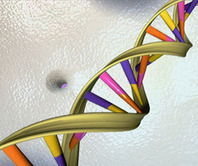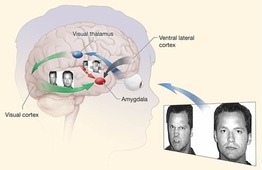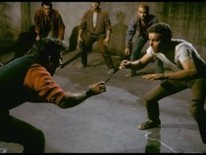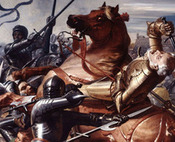
allAfrica.com: Somalia: How Childhood Trauma of Somali and Other Refugees Has Shaped Gang Culture On Britain's Streets
From allafrica.com - February 12, 2013 12:23 PM allAfrica: African news and information for a global audience...I recently gave a talk for Radio 4's Four Thought series, exploring the links between childhood war trauma suffered by young Somali men and the way some are drawn to violent gang culture. Like other young Somali men I arrived in Britain in the 1990s as a child refugee fresh from the anarchy and mayhem of civil war in Somalia. Prior to settling in Britain many of us endured profound traumatic events. Once in Britain, we were thrown into existing zones of poverty in the inner cities, confused, alienated and unable to make sense of our new homes. We had little in the way of education, and were plunged into unfamiliar British life without a map. 
Bullying by childhood peers leaves a trace that can change the expression of a gene linked to mood
From www.psypost.org - February 14, 2013 A recent study by a researcher at the Centre for Studies on Human Stress (CSHS) at the Hôpital Louis-H. 
Why Threats to Social Identity Lead to Conflict
From thesituationist.wordpress.com- February 14, 2013 Be it at school, office, the neighborhood or the community people live in, conflicting situations amongst various groups might arise on an almost day to day basis. Today, the prevalence of these intergroup conflicts is on the rise and has resulted in minor disagreements amongst friends to waging full scale wars between countries. Early experience shapes amygdala sensitivity to race: an international adoption design.
Telzer EH1, Flannery J, Shapiro M, Humphreys KL, Goff B, Gabard-Durman L, Gee DD, Tottenham N.J Neurosci. 2013 Aug 14;33(33):13484-8. doi: 10.1523/JNEUROSCI.1272-13.2013. In the current study, we investigated how complete infant deprivation to out-group race impacts behavioral and neural sensitivity to race. Although monkey models have successfully achieved complete face deprivation in early life, this is typically impossible in human studies. We overcame this barrier by examining youths with exclusively homogenous racial experience in early postnatal development. These were youths raised in orphanage care in either East Asia or Eastern Europe as infants and later adopted by American families. The use of international adoption bolsters confidence of infant exposure to race (e.g., to solely Asian faces or European faces). Participants completed an emotional matching task during functional MRI. Our findings show that deprivation to other-race faces in infancy disrupts recognition of emotion and results in heightened amygdala response to out-group faces. Greater early deprivation (i.e., later age of adoption) is associated with greater biases to race. These data demonstrate how early social deprivation to race shapes amygdala function later in life and provides support that early postnatal development may represent a sensitive period for race perception.
A preliminary study of medial temporal lobe function in youths with a history of caregiver deprivation and emotional neglect.
Maheu FS1, Dozier M, Guyer AE, Mandell D, Peloso E, Poeth K, Jenness J, Lau JY, Ackerman JP, Pine DS, Ernst M. Cogn Affect Behav Neurosci. 2010 Mar;10(1):34-49. doi: 10.3758/CABN.10.1.34. Previous research findings have linked caregiver deprivation and emotional neglect with sensitivity to threatening cues. The present preliminary study investigated whether dysfunctions of the medial temporal lobe could underlie these associations. Using fMRI, we measured medial temporal lobe responses to emotional faces (angry, fearful, happy, neutral) among 30 youths. Eleven of the youths had a history of caregiver deprivation and emotional neglect. Attention states (i.e., attention to anger, fear, or physical attributes, or passive viewing) were systematically manipulated. Relative to comparison youths, youths with a history of caregiver deprivation and emotional neglect showed significantly greater left amygdala and left anterior hippocampus activation during the processing of threatening information. To our knowledge, these findings are the first to demonstrate altered medial temporal lobe function during the processing of threat cues in youths with a history of caregiver deprivation and emotional neglect. |

NIMH · Threat Bias Interacts with Combat, Gene to Boost PTSD Risk
From www.nimh.nih.gov - February 14, 2013 Excess attention to avoidance of threat – depending on the situation – can increase risk for PTSD, suggests a new study. 
The Sometimes Significant Effects Of Sexism
From popsych.org - February 14, 2013 Ford et al (2007) sought to demonstrate that sexist humor would lead men who were high in “hostile sexism” to act in a discriminatory fashion towards women. Broadly speaking, the authors suggest that people who hold sexist beliefs often try to suppress the expression of those beliefs in the hopes of avoiding condemnation by others who are less sexist. 
Experiencing discrimination increases risk-taking, anger, and vigilance
From www.psypost.org - February 14, 2013 New research suggests that when rejection comes in the form of discrimination, people respond with a pattern of thoughts, behaviors, and physiological responses that may contribute to overall health disparities. 
Medieval Knights May Have Had PTSD : Discovery News
From news.discovery.com - February 11, 2013 We think of them as courageous, chivalrous, brutal and cold-hearted, but medieval knights lived hard lives and suffered.In reality, the lives of knights were filled with a litany of stresses much like those that modern soldiers deal with. They were often sleep-deprived, exhausted and malnourished. They slept outside on hard ground, fully exposed to whatever weather befell them. And their lives were full of horror and carnage as they regularly killed other men and watched their friends die. The cortisol response to anticipated intergroup interactions predicts self-reported prejudice
PLoS One. 2012;7(3):e33681. doi: 10.1371/journal.pone.0033681. Epub 2012 Mar 19. .Bijleveld E1, Scheepers D, Ellemers N. A While prejudice has often been shown to be rooted in experiences of threat, the biological underpinnings of this threat-prejudice association have received less research attention. The present experiment aims to test whether activations of the hypothalamus-pituitary-adrenal (HPA) axis, due to anticipated interactions with out-group members, predict self-reported prejudice. Moreover, we explore potential moderators of this relationship (i.e., interpersonal similarity; subtle vs. blatant prejudice). Participants anticipated an interaction with an out-group member who was similar or dissimilar to the self. To index HPA activation, cortisol responses to this event were measured. Then, subtle and blatant prejudices were measured via questionnaires. Findings indicated that only when people anticipated an interaction with an out-group member who was dissimilar to the self, their cortisol response to this event significantly predicted subtle (r = .50) and blatant (r = .53) prejudice. These findings indicate that prejudicial attitudes are linked to HPA-axis activity. Furthermore, when intergroup interactions are interpreted to be about individuals (and not so much about groups), experienced threat (or its biological substrate) is less likely to relate to prejudice. This conclusion is discussed in terms of recent insights from social neuroscience. | ||||||
- Home
- Overview
-
Understanding Hate
- Introduction
- What is Hate? >
-
The Roots of Hate
>
- Early Imprints >
- What Are We Doing To Our Children? >
- Effects of Trauma and Abuse >
- Causes and Effects of Bullying
- Trauma, bigotry, violence linked
- Authoritarian Upbringings >
- Absolutism and Insularity >
- Papers: Early Roots of Prejudice
- Impaired Cognition >
- The Violent Brain >
- Roots of Violence and Cruelty >
- Ghosts of the Past >
-
How Hate Manifests
>
- Hate in the News >
-
Group Influence
>
- Social Defenses >
- Fanning the Flames >
-
How We Fool Ourselves
>
-
Brain and Belief
>
- Search for Certainty >
- Index: All Biases, Distortions and Influences
-
Overcoming Hate
- Overview of Topics
- Introduction
-
Prevention
>
- Education >
-
Intervention
>
- Social Support and Inclusion >
- Helping Children in Dire Conditions >
- Preventing Violence and Bullying >
- Standing Up To Prejudice, Racism, and Bigotry >
- Training Our Protectors >
- Healing the Hurt >
- Educating Our Leaders >
- Resolving Conflict >
- Israel-Palestine >
- Promoting Dignity >
- Healing the Ghosts of the Past >
- Restorative Justice >
- Confronting Mass Atrocities >
- Social Advances >
- More Solutions >
-
Resources
- Tools